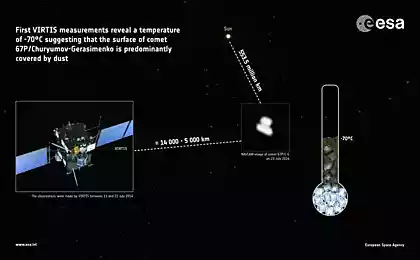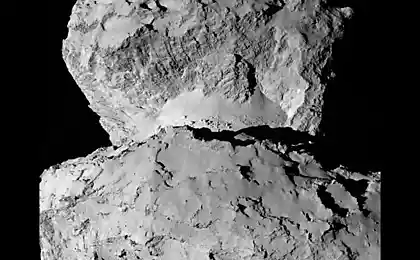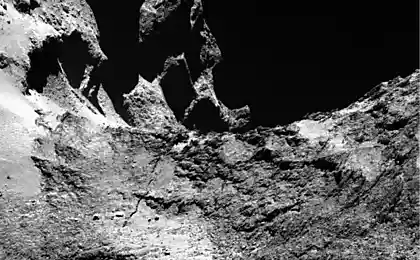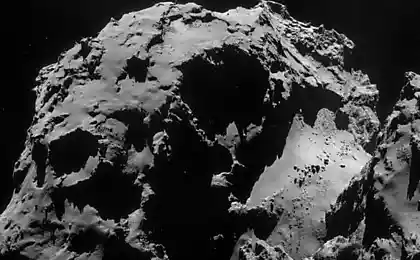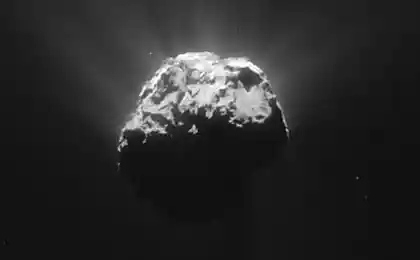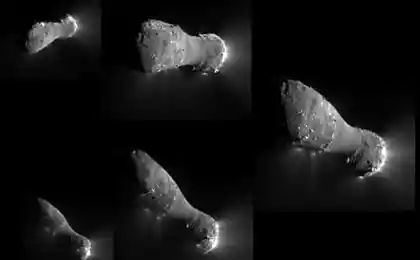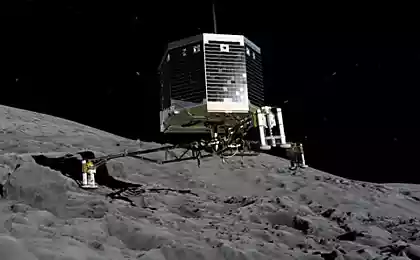1247
Part of the scientific instruments interplanetary station "Rosetta" was included in the operating mode
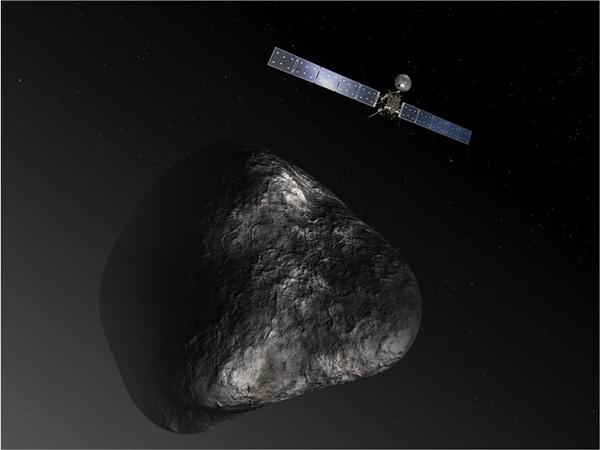
Habré's mission interplanetary station «Rosetta» to comet Churyumov-Gerasimenko wrote more than once. And each time it was the news about the next mission's success, for example, that station was able to "wake up» after prolonged inactivity.
Now - more good news. The fact that part of scientific instruments station has entered into operation. Who conducted observations of the surrounding space with transferring data to Earth. All this - the preparation for the study of the comet to which half a million kilometers and a couple of months of ways.
Now Rosetta is close to the main asteroid belt located between Jupiter and Mars. Total on board the station - 11 scientific instruments, three of which have already begun to work.
It is an ultraviolet spectrometer, Alice, microwave apparatus MIRO, as well as the sensor IES.
Alice - a system that will analyze the composition of the gas clouds of dust and gas surrounding the comet nucleus (this cloud has its own name - кома). According to the composition of gases coma can be judged on the composition of the comet's nucleus. Furthermore, Alice will help to determine the temperature of the solar system during the formation of the comet (about 4, 6 billion years ago). Define it can be by the number of argon in the composition of the coma.
MIRO Toolkit allows you to define the process of forming the comet's tail, as well as some of the parameters of the tail. With these data we can learn more about how the formation of the tail during the approach of the comet to the Sun, as well as during its removal from the light.
And finally, IES - it's a whole set of 5 tools that allows to analyze the plasma surrounding the comet, and to analyze the solar wind interaction of the particles constituting the "wind" with the gas emanating from the comet's nucleus.
In addition, it is worth remembering such a device, as Rosetta Orbiter Spectrometer for Ion and Neutral Analysis (ROSINA). This system allows to distinguish molecular nitrogen and carbon monoxide molecules with essentially the same mass. And this, in turn, will help to clarify the conditions for the formation of the solar system.
Via astronomy
Source: habrahabr.ru/post/226111/












